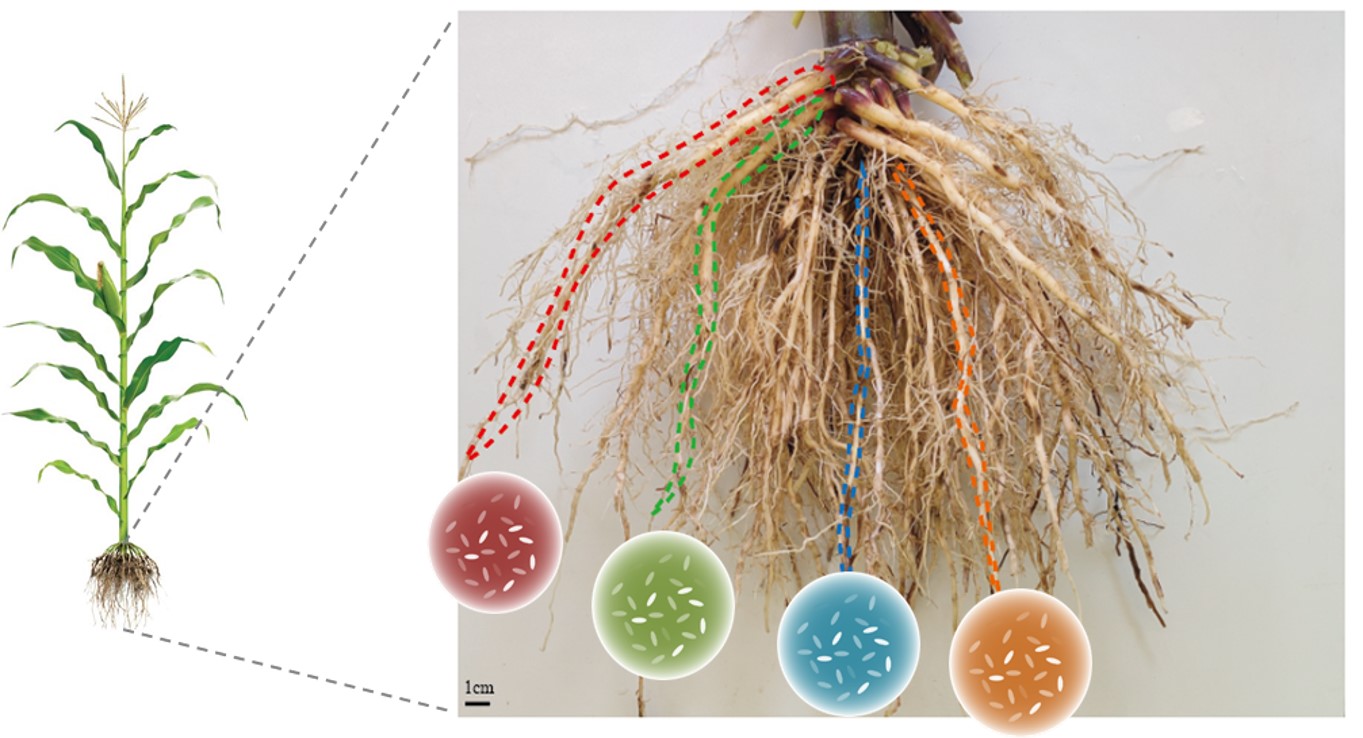P9 - LCM-Rhizomics
Root-structure and soil-texture dependent microbial self-organization in the rhizosphere and in specific cell-types of the endorhizosphere of maize

Root hairs, tubular outgrowths of the root epidermis, play a critical role in carbon and nutrient exchange between host plants and the rhizosphere and act as a determinant of the microbiome thriving at the root-soil interface. The microbial communities inhabiting the rhizosphere engage in complex interactions with their host plants which span from parasitism to mutualism. Consistency and size of the rhizosphere determines the capacity of plants to cope with soil abiotic stresses in crops. Therefore, the rhizosphere microbiome emerges as one of the determinants of plant health, yield potential and resource use efficiency contributing to sustainable agriculture.
The diversification of genes involved in root hair development suggests a substantial divergence in the structure and expression of genes involved in root hair patterning. Thus far, in maize several root hair mutants with contrasting length and density of root hairs and root hair defective (rth) genes controlling root hair elongation have been characterized. The proteins encoded by rth3, rth5, and rth6 are functionally linked during maize root hair formation. Genetic analyses demonstrate that root hair growth and development is genetically controlled by different genes involved in exocytotic vesicle fusion, cellulose synthesis and translational processes.
In the second phase of the SPP2089, we will investigate root-microbe interactions among root hair mutants affected in different genes influencing the length of root hairs. This also supports the potential importance of the rhizosphere size and the capacity for attaching the living area around the roots for the soil microbiome. Overall goal of the project is to obtain a systemic understanding of root hair driven self-organization of the rhizosphere microbiome and its potential feedback on host root morphology, anatomy and gene expression. This goal will be achieved by analyzing the interaction of several root hair mutants of maize which display contrasting root hair phenotypes with respect to length and density and are affected in different genes under two soil conditions (loam and sand). In these experiments we will explore the morphological, anatomical and transcriptomic divergence of different root types and their effects on the composition and diversity of the rhizosphere microbiome under these soil conditions. To this end, candidate genes associated with microbes associated with the root phenotype will be identified and validated by reverse genetics and microbial synthetic communities.
Outcome
Over two phases of SPP2089, Project 9 investigated the spatiotemporal development of root structure and associated microbiome community and function determined by environmental factors and genetic basis under both greenhouse and field conditions, and potential microbial feedback on host root morphology and anatomy.
In a first study (He et al. in preparation), bacterial 16S rRNA gene sequencing was performed for the root and rhizosphere samples collected from axial and lateral root separated from two-round young crown root for two maize genotypes (WT and rth3) at BBCH19 under two soil conditions (loam and sand) in two consecutive years. Statistical analysis demonstrated that all environmental (year, soil texture, and compartment) and genetically determined factors (genotype, root type, and root part) significantly influenced bacterial community structure. In the rhizosphere, four highly conserved core bacteria (top10 at family level) (Sphingomonadaceae, Oxalobacteraceae, Streptomycetaceae, and Rhizobiaceae) enriched under two soil conditions in both years, which displayed the potential to adapt changing environments. Moreover, Rhizobiaceae,a nitrogen-fixing bacterial family, were observed to enrich in axial root across different environmental conditions. These core taxa in axial root represent an untapped resource that can be exploited to increase crop productivity. Further research is needed to explore the potential mechanisms and functions involved in the association between the axial root microbiota and its host.
In a second study (He et al. in preparation), rhizosphere samples were collected from axial and lateral root separated from different whorl of crown roots (from young to old) for four maize genotypes (WT, rth3, rth5, and rth6) at flowering time in the field. Bacterial 16S rRNA gene sequencing was performed for all soil samples. Microbial data demonstrated that root type was the largest driver in influencing bacterial community structure, and the bacterial richness increased from young root to the old root. Compared to old root, young root specifically recruited Oxalobacteraceae in the rhizosphere. Meanwhile, smaller diameter was observed, while larger aerenchym was formed in old root. Spatiotemporal development of functional bacteria (Oxalobacteraceae) and aerenchym formation from old root to young root, suggesting Oxalobacteraceae may involve in aerenchym formation during root development and senescence. The hormone ethylene plays a key role regulate root aerenchym formation, thus influences plant senescence under stress conditions. Maize ethylene biosynthesis gene ZmACS7 overexpression and knockout plants, integrating with isolation and controlled inoculation of Oxalobacteraceae containing ACC deaminase (ACCD) enzyme function has confirmed that ethylene-degradation bacteria contributed to improving adaptation to low nitrogen availability by triggering developmental feedback on lateral root and aerenchyma formation.
Link to English scientific abstract
Link to German scientific abtract
